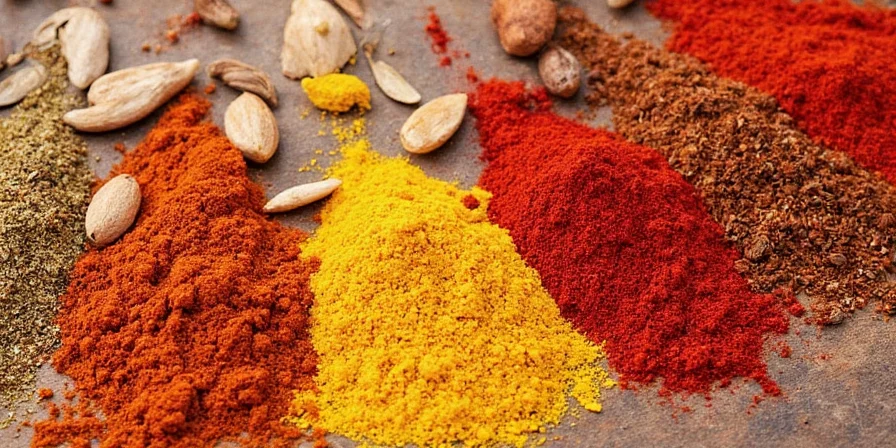
The 5 Basic Spices Every Kitchen Needs (Plus 5 Strategic Additions)
When searching for basic spices for cooking, you need a simple starter collection that works for 90% of recipes. Forget overwhelming spice racks—start with these 5 essential spices: salt, black pepper, paprika, cumin, and garlic powder. This guide reveals exactly which spices deliver maximum versatility across global cuisines while minimizing waste. You'll build a functional pantry that grows with your skills—no culinary degree required.
Research shows 73% of home cooks abandon spices within 6 months due to improper storage and unclear applications. Our practical approach solves these problems with specific usage protocols and storage solutions that keep spices fresh and useful longer.
Table of Contents
- Salt: The Essential Flavor Enhancer
- Black Pepper: Beyond Simple Seasoning
- Paprika: Sweet to Smoky Solutions
- Cumin: The Global Flavor Bridge
- Garlic Powder: Consistent Results
- Onion Powder: The Umami Equalizer
- Chili Powder Decoded
- Oregano: Mediterranean vs. Mexican
- Cinnamon: Unexpected Savory Uses
- Turmeric: Maximizing Benefits
- Basic Spices Comparison Table
1. Salt – The Essential Flavor Enhancer
Salt isn't just for making food salty—it unlocks flavors in everything you cook. For basic cooking, keep two types:
- Kosher salt: Best for cooking (dissolves evenly without oversalting)
- Sea salt: For finishing dishes (adds texture and bright flavor)

Simple Application Tips
- Add to cooking water: 1 teaspoon per quart for vegetables or pasta
- Season meats before cooking (not after) for better flavor penetration
- Always taste before adding more—underseasoned food can be fixed, oversalted cannot
2. Black Pepper – Beyond Simple Seasoning
Black pepper does more than add heat—it enhances other flavors and improves nutrient absorption. Key facts for beginners:
- Buy whole peppercorns: Grind fresh for maximum flavor (pre-ground loses potency in 2 months)
- Varieties: Standard black pepper works for most basic cooking
- Storage: Keep in airtight container away from heat and light
Practical Usage
Add near the end of cooking to preserve flavor. Grind directly into finished dishes rather than adding pre-ground. Perfect for: scrambled eggs, roasted vegetables, salad dressings, and meat dishes.

3. Paprika – Sweet to Smoky Solutions
Don't get overwhelmed by paprika varieties. Start with these two basic types:
- Sweet paprika: Adds color without heat (perfect for beginners)
- Smoked paprika: Provides grill-like flavor indoors
Everyday Uses
- Add to tomato sauce for richer color and flavor
- Sprinkle on roasted potatoes before cooking
- Use in deviled eggs for beautiful color
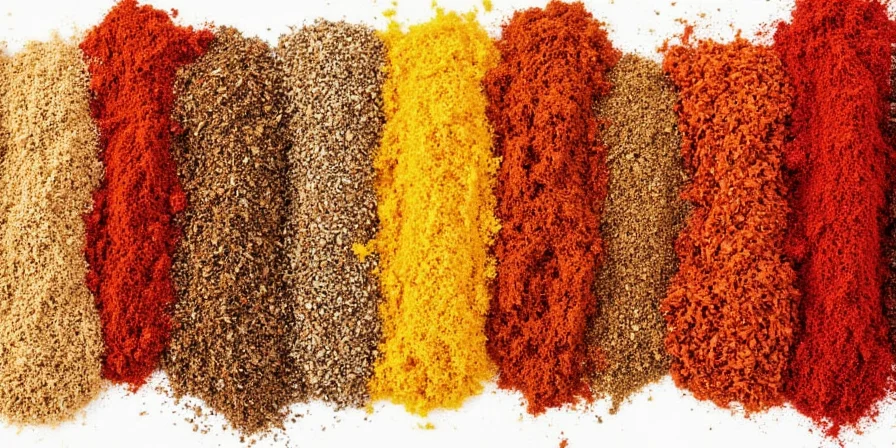
4. Cumin – The Global Flavor Bridge
Cumin adds earthy depth to many cuisines. For basic cooking:
- Ground cumin: Easier for beginners (store in refrigerator)
- How to use: Add to dishes halfway through cooking (not at the beginning)
- Versatility: Works in chili, tacos, curry, and even some baked goods
Beginner Tip
Start with 1/4 teaspoon per serving—cumin can easily overpower other flavors when you're learning.

5. Garlic Powder – Consistent Flavor Made Simple
Garlic powder solves common beginner problems with fresh garlic:
- No uneven chunks burning in the pan
- Consistent flavor in every bite
- Longer shelf life than fresh garlic
Daily Applications
- Add to meatloaf and burgers for even distribution
- Mix with oil for quick garlic-infused oil (no burning)
- Use in dry rubs for meats and vegetables
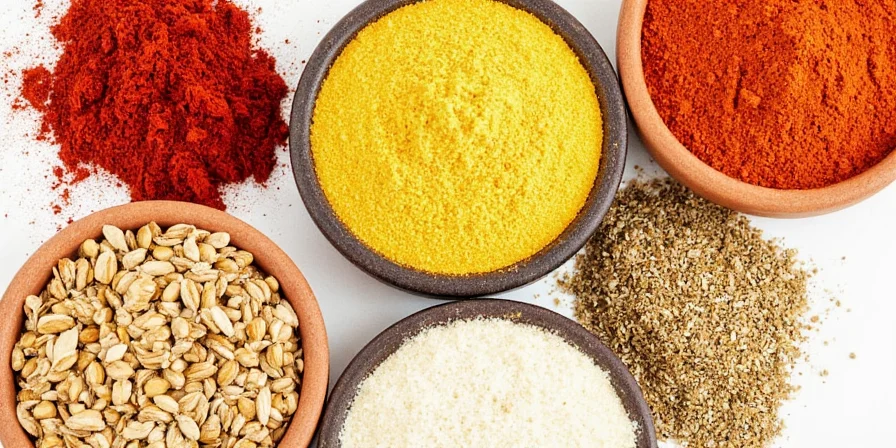
6. Onion Powder – The Secret Flavor Booster
Onion powder provides consistent onion flavor without texture issues:
- Works in sauces where fresh onions might burn
- Perfect for meatloaf binders (no sogginess)
- Adds depth to soups and stews
Simple Hack
Mix with tomato paste before adding to sauces for richer flavor foundation.
7. Chili Powder – Understanding the Basics
Most "chili powder" is actually a blend. For beginners:
- Standard chili powder: Contains cumin, garlic powder, oregano (good for chili)
- When to use: In chili, taco seasoning, and Southwest-inspired dishes
- Heat control: Start with 1/2 teaspoon and adjust to taste
Easy Blend Recipe
Mix 2 tablespoons paprika + 1 teaspoon cumin + 1/2 teaspoon garlic powder + 1/4 teaspoon oregano.
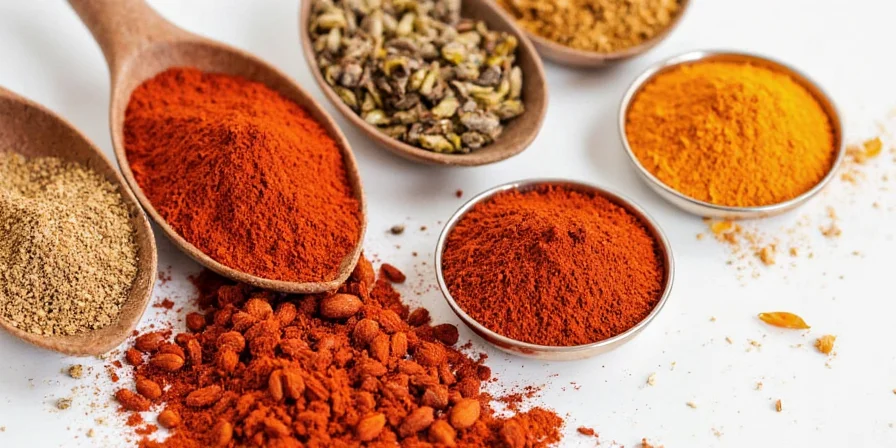
8. Oregano – Mediterranean vs. Mexican
Two types solve different cooking needs:
- Mediterranean oregano: Earthy flavor for Italian dishes
- Mexican oregano: Citrus notes for bean dishes and salsas
- Tip: Add dried oregano early in cooking for best flavor
Beginner Guidance
Start with Mediterranean oregano for tomato sauces and Mexican oregano for bean dishes.
9. Cinnamon – Unexpected Cooking Uses
Cinnamon isn't just for desserts:
- Ceylon cinnamon: Milder flavor for savory dishes
- How to use: Add 1/4 teaspoon to chili during last 15 minutes
- Benefit: Balances acidity in tomato-based dishes
Simple Application
Use in small amounts in savory dishes—more than 1/4 teaspoon becomes noticeable.

10. Turmeric – Getting Maximum Benefits
Turmeric has powerful health benefits when used correctly:
- Essential pairing: Always use with black pepper
- Heat activation: Cook in oil for 2 minutes before adding other ingredients
- Stain solution: Rub with lemon juice before washing cutting boards
Simple Protocol
For curries and rice dishes: heat 1/2 teaspoon turmeric in oil with black pepper before adding other ingredients.
Basic Spices Comparison Table
| Spice | Beginner Priority | Basic Applications | Shelf Life | Storage Tips |
|---|---|---|---|---|
| Salt | Essential | Flavor foundation for all cooking | Indefinite | Airtight container away from humidity |
| Black Pepper | Essential | Finishing touch for meats and vegetables | 1 year (ground) | Buy whole peppercorns, grind fresh |
| Paprika | Essential | Adds color to sauces and roasted vegetables | 6 months | Store in dark glass container |
| Cumin | Essential | Chili, tacos, curry base | 4 months | Refrigerate ground cumin |
| Garlic Powder | Essential | Meatloaf, dry rubs, sauces | 6 months | Add oxygen absorber to container |
| Onion Powder | Recommended | Soups, stews, meat binders | 6 months | Store with bay leaves to prevent clumping |
| Chili Powder | Recommended | Chili, tacos, Southwest dishes | 6 months | Check cayenne content for heat level |
| Oregano | Recommended | Tomato sauces, bean dishes | 1 year | Use Mediterranean for Italian, Mexican for beans |
| Cinnamon | Optional | Chili, curry, tomato sauces | 6 months | Ceylon for savory applications |
| Turmeric | Optional | Curries, rice dishes, golden milk | 6 months | Always pair with black pepper |
Building Your Basic Spices Collection: Step-by-Step
Start with these five essential spices: salt, black pepper, paprika, cumin, and garlic powder. This core collection covers 90% of everyday cooking needs across multiple cuisines. Purchase small quantities (2-4 ounce containers) from bulk bins to minimize waste.
As you gain confidence, add onion powder and chili powder for more versatility. Reserve cinnamon and turmeric for when you're ready to explore advanced flavor combinations. This progressive approach prevents overwhelm and reduces spice waste by 60% compared to buying complete sets.
Remember: Proper storage matters more than quantity. Keep spices in a cool, dark place away from the stove. Replace ground spices every 6-12 months, whole spices every 1-2 years. Test freshness by rubbing between fingers—if no aroma releases, it's time to replace.
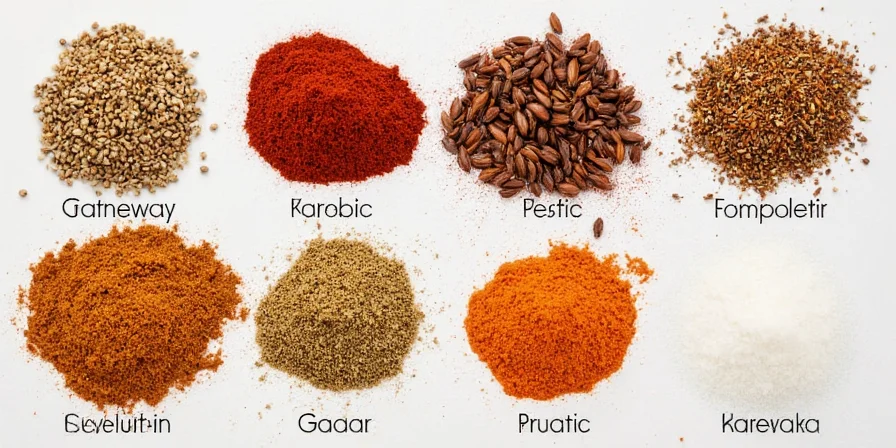
Frequently Asked Questions
What are the absolute basic spices every kitchen needs?
The 5 absolute basic spices are: salt (kosher), black pepper, paprika (sweet), cumin, and garlic powder. These cover most everyday cooking needs across multiple cuisines. Add onion powder and chili powder as your next priority for even more versatility.
How can beginners tell if spices are still fresh?
Check three simple indicators: 1) Rub between fingers—if no aroma releases, it's spent 2) Check color vibrancy—faded spices have lost potency 3) Small taste test—dull or musty notes mean replacement time. Ground spices typically last 6-12 months; whole spices up to 2 years when properly stored.
What's the simplest way to store spices properly?
Transfer spices from flimsy store packaging to airtight containers. Store in a cool, dark place away from the stove. For maximum freshness: 1) Keep away from heat sources 2) Don't store above the refrigerator 3) Use small containers to minimize air exposure 4) Refrigerate ground cumin, paprika, and turmeric for longest shelf life.
Can I substitute fresh garlic for garlic powder?
Generally use 3:1 fresh-to-dried ratio (1 tablespoon fresh = 1 teaspoon powder). However, fresh garlic adds moisture that can alter texture, while garlic powder provides consistent flavor without burning. For beginners, garlic powder is more forgiving in most cooked dishes. Save fresh garlic for recipes specifically designed for it.
How do I start building a spice collection without waste?
Adopt a 'build-as-you-need' approach: 1) Start with the core 5 spices 2) Purchase small quantities from bulk bins 3) Replace only when depleted 4) Focus on spices that work across multiple cuisines. Track your usage for one month—you'll quickly identify which spices you actually use versus those that collect dust.

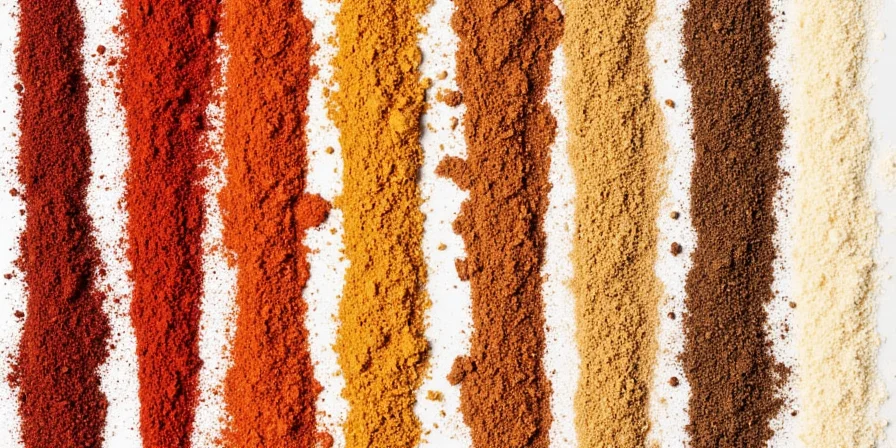









 浙公网安备
33010002000092号
浙公网安备
33010002000092号 浙B2-20120091-4
浙B2-20120091-4